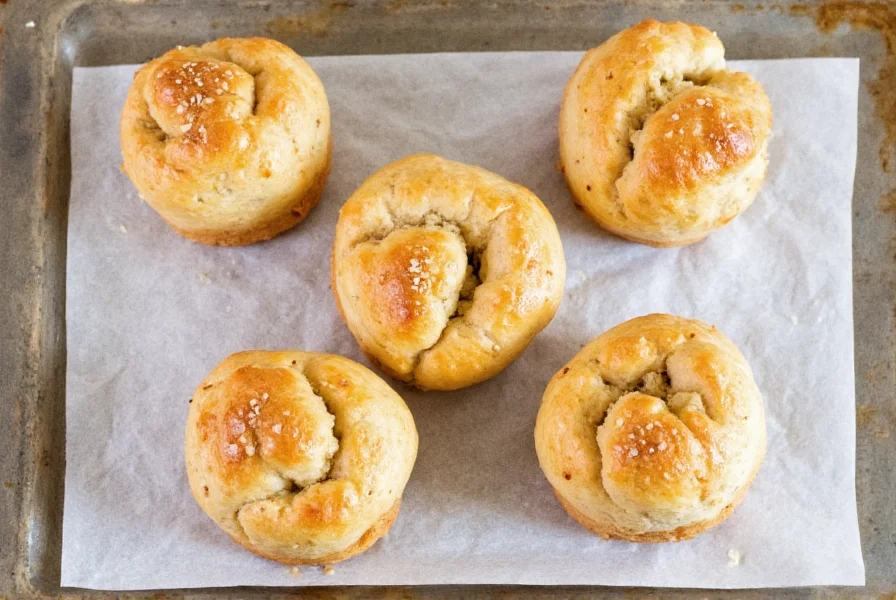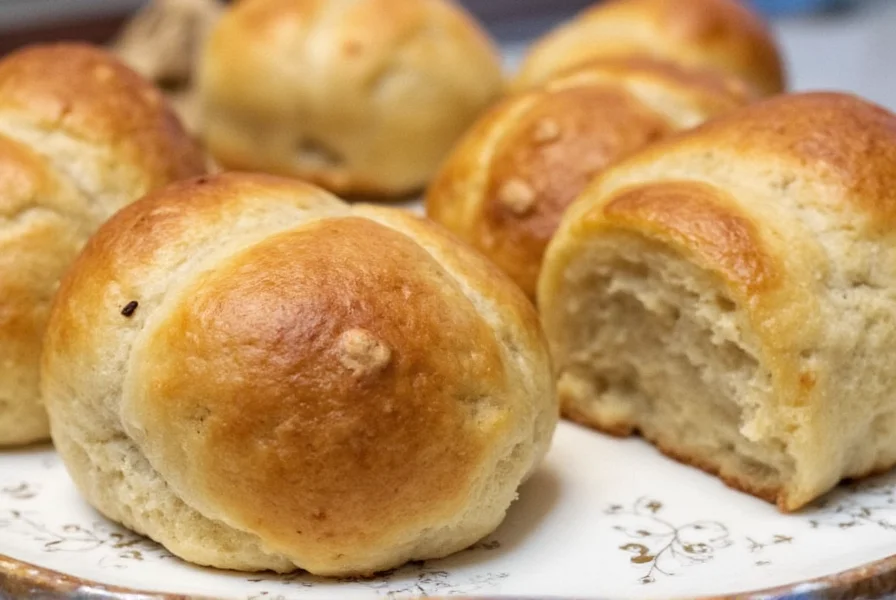Nothing captures the essence of Swedish fika quite like a freshly baked cardamom bun. These delicate pastries, called kardemummabullar in Sweden, represent more than just a sweet treat—they're a cultural institution with centuries of tradition behind them. Understanding the nuances of authentic Swedish cardamom buns transforms a simple baking project into a meaningful connection with Scandinavian heritage.
The Cultural Significance of Cardamom Buns in Sweden
Cardamom arrived in Sweden through ancient spice trade routes, becoming deeply embedded in Swedish culinary tradition by the 16th century. Unlike many other European countries that primarily use cardamom in savory dishes, Swedes embraced it in their baking, creating a distinctive flavor profile that sets their pastries apart.
In Sweden, cardamom buns are more than just pastry—they're central to fika, the cherished Swedish coffee break ritual. This daily pause for coffee and baked goods fosters social connection and work-life balance, with cardamom buns ranking among the most popular choices. According to Swedish food historians, the tradition of baking cardamom buns intensified during the 19th century when cardamom became more affordable and accessible.
Why Cardamom Makes the Difference
The secret to authentic Swedish cardamom buns lies in using freshly ground cardamom pods rather than pre-ground spice. Whole cardamom seeds retain their volatile oils much longer, delivering a brighter, more complex flavor profile. Swedish bakers typically use green cardamom (Elettaria cardamomum), which provides the characteristic citrusy, floral notes essential to traditional recipes.
| Cardamom Type | Flavor Profile | Best For Swedish Buns |
|---|---|---|
| Green Cardamom (whole pods) | Citrusy, floral, complex | ★★★★★ (ideal) |
| Green Cardamom (pre-ground) | Muted, less complex | ★★☆☆☆ |
| Black Cardamom | Smoky, camphorous | ☆☆☆☆☆ (not recommended) |
Professional Swedish bakers emphasize that grinding your own cardamom just before baking makes a dramatic difference. The volatile compounds responsible for cardamom's distinctive aroma begin dissipating immediately after grinding, which explains why pre-ground versions lack the vibrant flavor of authentic kardemummabullar.
Authentic Swedish Cardamom Bun Recipe
This traditional recipe yields 12 perfectly textured cardamom buns with the characteristic soft crumb and aromatic flavor Swedes cherish. The key to success lies in proper yeast activation and careful cardamom measurement.

Ingredients
- 500g all-purpose flour (plus extra for dusting)
- 250ml whole milk, lukewarm
- 7g active dry yeast
- 75g granulated sugar
- 100g unsalted butter, softened
- 1 large egg
- 1 tsp salt
- 2 tsp freshly ground cardamom (from about 15-20 pods)
Filling
- 50g softened butter
- 50g sugar
- 1.5 tsp freshly ground cardamom
Glaze (optional)
- 25g powdered sugar
- 1 tbsp milk
Step-by-Step Instructions
- Activate the yeast: Warm milk to 105-110°F (40-43°C), sprinkle yeast and 1 tsp sugar over top, and let sit for 5-10 minutes until foamy.
- Prepare dough: In a large bowl, combine flour, remaining sugar, salt, and freshly ground cardamom. Make a well in center and add yeast mixture, egg, and softened butter.
- Mix and knead: Stir until combined, then knead on floured surface for 10 minutes until smooth and elastic. Alternatively, use dough hook on medium speed for 8 minutes.
- First rise: Place dough in greased bowl, cover with damp cloth, and let rise in warm place for 1-1.5 hours until doubled.
- Prepare filling: Mix filling ingredients until well combined.
- Shape buns: Roll risen dough into 30x40cm rectangle. Spread filling evenly over surface, then roll tightly into log. Cut into 12 equal pieces.
- Second rise: Place buns cut-side up in greased baking dish, cover, and let rise 45-60 minutes until puffy.
- Bake: Preheat oven to 425°F (220°C). Bake for 10 minutes, then reduce heat to 375°F (190°C) and bake 10-15 minutes more until golden brown.
- Glaze (optional): Mix glaze ingredients and brush over warm buns.
Common Baking Challenges and Solutions
Even experienced bakers encounter issues with Swedish cardamom buns. Understanding these common problems ensures perfect results every time:
- Dense texture: Often caused by too much flour or insufficient kneading. Measure flour by weight rather than volume, and ensure proper gluten development during kneading.
- Weak cardamom flavor: Using pre-ground cardamom or old spice. Always grind whole pods immediately before baking for maximum flavor impact.
- Buns spreading too much: Dough may be over-risen or too warm. Control second rise in a cooler environment (70-75°F/21-24°C) for optimal structure.
- Uneven browning: Oven temperature inconsistencies. Use an oven thermometer and rotate baking sheet halfway through baking.
Variations on the Traditional Recipe
While purists prefer the classic version, thoughtful variations can honor the tradition while accommodating different preferences:
- Natural sweetener version: Replace half the sugar with birch sugar (xylitol), which Swedes traditionally use as it doesn't feed yeast but provides sweetness.
- Whole grain adaptation: Substitute 25% of the all-purpose flour with sifted whole wheat flour for added nutrition without compromising texture.
- Cardamom cream buns: Add 2 tbsp cardamom-infused pastry cream to the center of each bun after baking for an extra dimension of flavor.
Remember that authentic Swedish baking emphasizes balance—any variation should enhance rather than overpower the distinctive cardamom flavor that defines these beloved buns.
Serving Traditions and Pairings
In Sweden, cardamom buns are traditionally served warm with strong coffee during fika, the mid-morning or afternoon coffee break. The Swedes believe the bitterness of coffee perfectly complements the sweet, aromatic buns.
For the most authentic experience, serve cardamom buns alongside:
- Strong black coffee (the traditional pairing)
- Cloudberry jam (hjortron) for a tart contrast
- A simple glass of cold milk for children
Proper storage maintains freshness: keep in an airtight container at room temperature for up to 2 days, or freeze for longer storage. To refresh, warm in a 300°F (150°C) oven for 5 minutes—never microwave, as this ruins the delicate texture.
Cardamom Buns in Swedish Celebrations
These buns play specific roles in Swedish holiday traditions. During Lucia (December 13), Swedes often serve cardamom buns alongside saffron buns. At Midsommar (Midsummer), they appear as part of the festive table. Understanding these cultural contexts deepens appreciation for this simple yet significant pastry.

FAQ: Swedish Cardamom Buns
What's the difference between Swedish cardamom buns and cinnamon rolls?
Swedish cardamom buns feature cardamom as the primary spice in both dough and filling, creating a citrusy, floral flavor profile. Cinnamon rolls use cinnamon as the dominant spice with a sweeter, warmer profile. Cardamom buns typically have a lighter, more delicate crumb structure compared to the denser texture of many cinnamon rolls.
Can I make Swedish cardamom buns without a stand mixer?
Yes, you can make authentic Swedish cardamom buns by hand. The key is proper kneading technique—10-15 minutes of vigorous kneading on a floured surface develops the gluten structure needed for the characteristic soft texture. Look for the windowpane test: when you stretch a small piece of dough, it should form a thin, translucent membrane without tearing.
Why is freshly ground cardamom essential for authentic Swedish cardamom buns?
Freshly ground cardamom contains higher concentrations of volatile aromatic compounds that dissipate quickly in pre-ground spice. Swedish baking tradition emphasizes this freshness because cardamom's distinctive citrusy, floral notes define the bun's character. Whole pods retain these compounds for months, while pre-ground cardamom loses significant flavor within weeks.
How do I know when Swedish cardamom buns are properly proofed before baking?
Properly proofed cardamom buns will have visibly increased in size (about 50% larger) and feel airy when gently pressed. The indentation should slowly spring back halfway. Over-proofed buns will collapse when touched, while under-proofed buns will spring back completely and bake dense. The ideal proofing environment is 75-80°F (24-27°C) with moderate humidity.
What makes Swedish cardamom buns different from other Scandinavian cardamom pastries?
Swedish cardamom buns (kardemummabullar) feature a distinctive braided or coiled shape with cardamom in both dough and filling. Norwegian versions often include more butter and sugar, creating a richer pastry, while Danish cardamom buns typically incorporate a marzipan element. The Swedish approach emphasizes balance—sweet but not overwhelming, with cardamom flavor present but not dominant.











 浙公网安备
33010002000092号
浙公网安备
33010002000092号 浙B2-20120091-4
浙B2-20120091-4